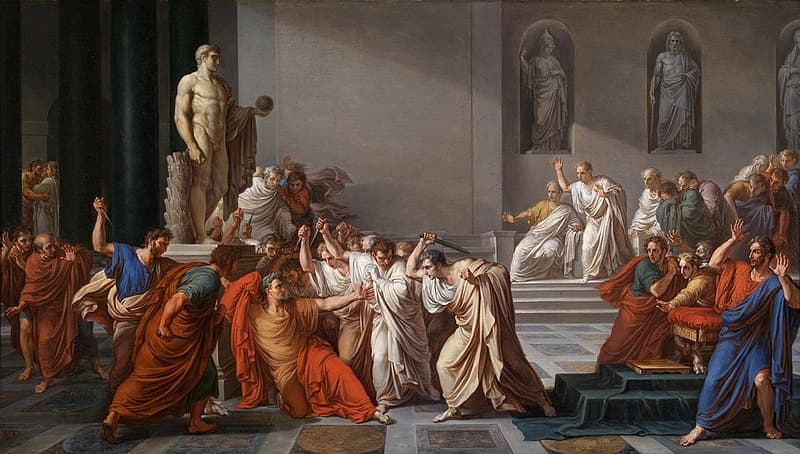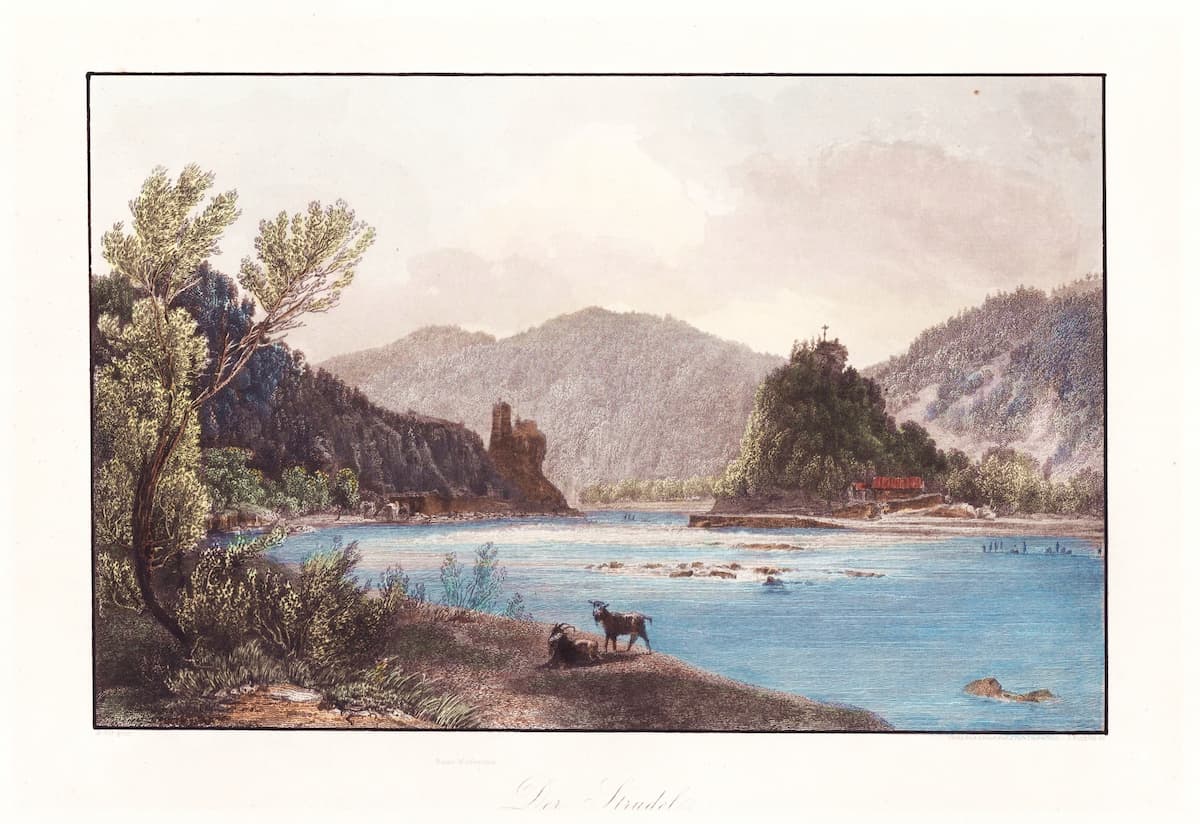The colourful Christian celebration of Easter is again around the corner. And for many people, the Easter egg best symbolises this festival of the resurrection of Jesus. During pre-Christianity, the egg was seen as a symbol of rebirth and life, and it was the Protestant Reformer Martin Luther who started the custom of the Easter egg hunt.

Egg dance
Another ancient and traditional Easter game was the egg dance. Eggs were laid on the ground, and performers would dance blindfolded to popular tunes. Featuring complex footwork, the dancer moved backwards and forwards between the eggs at great speed, hoping to damage as few as possible.
A number of variations on the egg dance existed in its day, and in German-speaking lands a particularly difficult task is still likened to “the egg-dance.” And one of the most popular dance performed as an egg dance was the “hornpipe.” What do you say, let’s do a little hornpipe dancing for Easter 2024!
George Frideric Handel: Water Music, “Alla Hornpipe”
A wonderful description of the egg dance has been documented in a 1895 issue of The American Magazine. It takes us back to Easter Monday 1498 and the wedding of Margaret of Austria to Philip the Handsome, Duke of Savoy.
“Then the great egg dance, the special dance of the season, began. A hundred eggs were scattered over a level space covered with sand, and a young couple, taking hands, began the dance. If they finished without breaking an egg they were betrothed, and not even an obdurate parent could oppose the marriage.”
Ernest Tomlinson: 3 Pastoral Dances: Hornpipe (Slovak Radio Symphony Orchestra; Ernest Tomlinson, cond.)
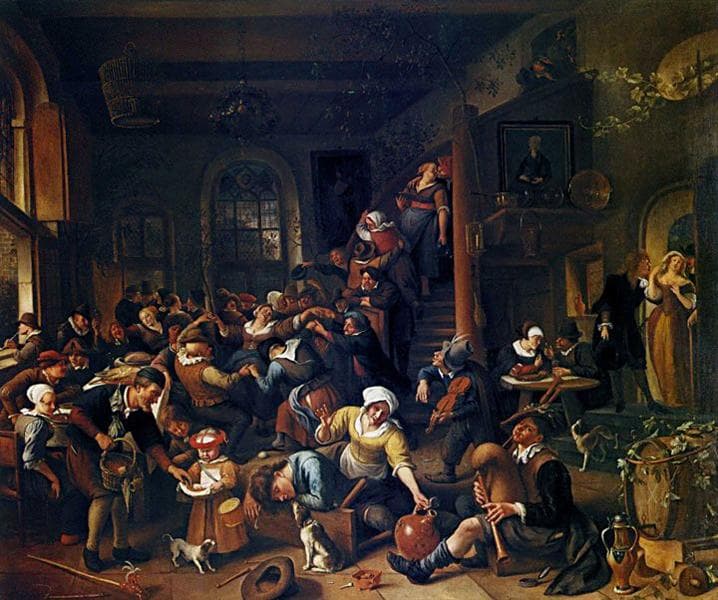
Egg dance, 1674
The report continues, “After three couples had failed, midst the laughter and shouts of derision of the on-lookers, Philibert of Savoy, bending on his knee before Marguerite, begged her consent to try the dance with him.
The admiring crowd of retainers shouted in approval, “Savoy and Austria!” When the dance was ended and no eggs were broken the enthusiasm was unbounded. Philibert said, Let us adopt the custom of Bresse. And they were affianced, and shortly afterward married.”
Henry Purcell: Hornpipe (arr. D. Orlowsky for clarinet and lute) (David Orlowsky, clarinet; David Bergmüller, lute)
It’s certainly interesting that the “Hornpipe” is both an instrument, and also a special dance. The instrument basically is a single-reed animal horn, possibly forming a bell. These hornpipes existed as folk instruments from the Caucasus and the Volga regions in Russia to the Greek islands and north Africa.
Apparently, there were an astonishing variety of different arrangements of finger-holes and musical techniques, and they are first mentioned in 15-century musical vocabularies. It is described as a rustic instrument, and appeared as a “Pibgorn” in Wales, and the instrument would feature double pipes played with an inflated bag of goatskin or cow’s stomach in Scotland.
Johann Friedrich Fasch: Overture in A minor – V. Hornpipe (Tempesta di Mare)
Now that we know about the hornpipe instrument, it is very easy to assume that the dance by this name is derived from the instrument. It seems, however, that this is not necessarily the case. In fact, it is a dance that resembles the “Jig,” but is distinguished from it by its metre. I read that the hornpipe dance falls into three different types.
The first version is a solo and executed by one person, or by two or more people dancing simultaneously but independently. In Scotland and Wales this kind of dance has existed as far back as memory serves, and in England it appeared in the 15th or 16th century. This dance has, and still is, highly popular in Ireland.
George Frideric Handel: Concerto Grosso in B-flat Major, Op. 6, No. 7, “Hornpipe” (Pacific MusicWorks Orchestra; Stephen Stubbs, cond.)
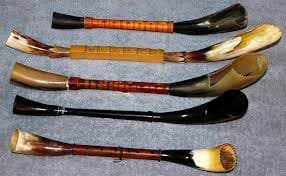
Welsh Pibgorn
A second type of hornpipe is a round dance for both sexes in hornpipe tempo, which initially started in England in the 15th century. This seems very close to the description of the egg-dance detailed in the royal wedding of 1498, although the dance did not yet officially carry the name “hornpipe.”
The third type of hornpipe is a longways country dance of the 17th century in syncopated 3/2 time, “created by dancing-masters for the assembly rooms or for private patrons. They are sometimes termed “maggot,” “delight,” or “whim.” The figuration was rather intricate and may well have been performed with hornpipe steps.
Georg Philipp Telemann: Suite in G Minor – VI. Hornpipe (Northern Chamber Orchestra; Nicholas Ward, cond.)
We find very detailed descriptions of the hornpipe steps in dance manuals of the 18th century, and it is recorded that “foreigners flocked to England to apply themselves with great attention to the study of the Hornpipe, which was regarded as original to this country.” The commentator added that “the lower class of people used hornpipe steps in the country dance and that few English seamen are to be found that are not acquainted with it.”
If you play a keyboard instrument or know the Watermusic by Handel, then you also know that individual movements of a keyboard or orchestral Suite or Overture, can carry the designation “Hornpipe.” These movements basically use the rhythm of the country dance type, and also appear in dance suites and incidental theatre music.
Gottlieb Muffat: Keyboard Suite in D minor – III. Hornpipe (Naoko Akutagawa, harpsichord)
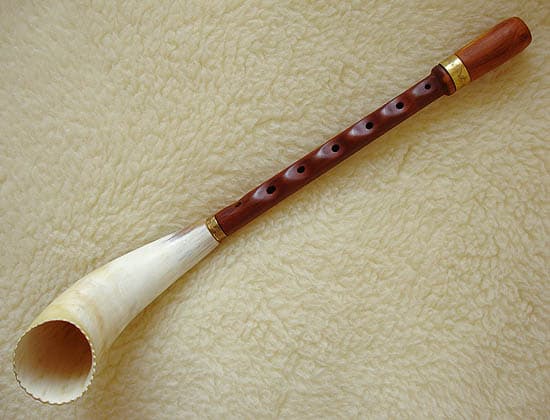
Hornpipe
In the instrumental music of the Baroque, hornpipe pieces often feature syncopation and various shifts in accents. One voice or a group of voices normally plays against the rhythm of the other voices, while the bass maintains a consistent meter. And as you can hear in the featured examples, the melody is often extremely lively and cheerful.
The earliest examples of the hornpipe appear in musical collections around the 1660s, and they entered the mainstream through the music of Henry Purcell and George Frideric Handel. In Purcell, the hornpipe is frequently used in his theatre and stage music, and the famous Handel “alla hornpipes” are no longer actual dances but mimic the style of the hornpipe.
Henry Purcell: The Fairy Queen, “Hornpipe”
The Hornpipe seems to have been all the popular rage in London by the middle of the 18th century. Clearly, the dance was beyond popular, and it also attracted the attention of a certain child prodigy by the name of Wolfgang Amadeus Mozart. He arrived with his father and sister in London in 1764, and he gave his first concert at Ranelagh Garden in June of that year.
In the centre of the garden stood a large wooden Rotunda and the prodigy performed harpsichord and organ compositions at a benefit for a newly established maternity hospital. We don’t know what compositions the young Mozart actually performed, but we do know that he carried with him a sketchbook. It contains 43 short pieces and sketches, with Mozart writing down his inspirations. And one of his inspirations was apparently a hornpipe, subtitled “Anglaise.” Amazing how the young lad of eight was able to effortlessly notate the musically and stylistic feature of the dance.
Wolfgang Amadeus Mozart: “Hornpipe” (Anglaise), K. 15s (Hans-Udo Kreuels, piano)
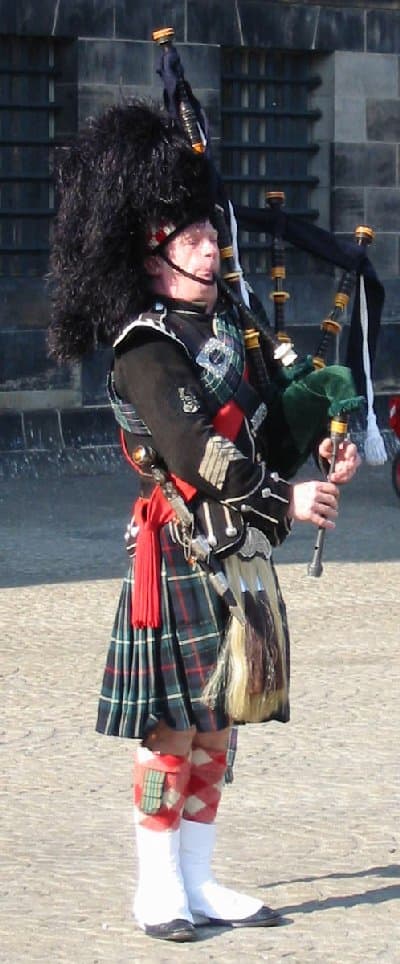
Bagpipe performer
For Mozart, the hornpipe seems to have been a typically English phenomenon, but various examples can also be found by German composers such as Telemann and Gottlieb Muffat. It has been suggested that they were perhaps inspired by Handel. In the event, the hornpipe was here to stay and composers in the 20th century once again drew inspiration from this particular dance.
One such hornpipe flowed from the pen of Erich Wolfgang Korngold. A local theatre was looking to stage the first centenary production of William Shakespeare’s comedy “Much Ado about Nothing” in 1920. And Korngold received the commission to write an incidental score. Since the composer had read almost all Shakespeare plays in his early teens, he enthusiastically got to work. In all, Korngold created a musical canvas of 18 separate numbers, concluding with the much celebrated “Hornpipe.”
Say what you want, but the Easter egg dance sounds like a good bit of fun. So let’s get the hornpipe ready and try not to smash any eggs. Happy Easter 2024.
For more of the best in classical music, sign up for our E-Newsletter
Erich Wolfgang Korngold: Much Ado about Nothing Suite, Op. 11 – V. Hornpipe (Mineria Symphony Orchestra; Carlos Miguel Prieto, cond.)

